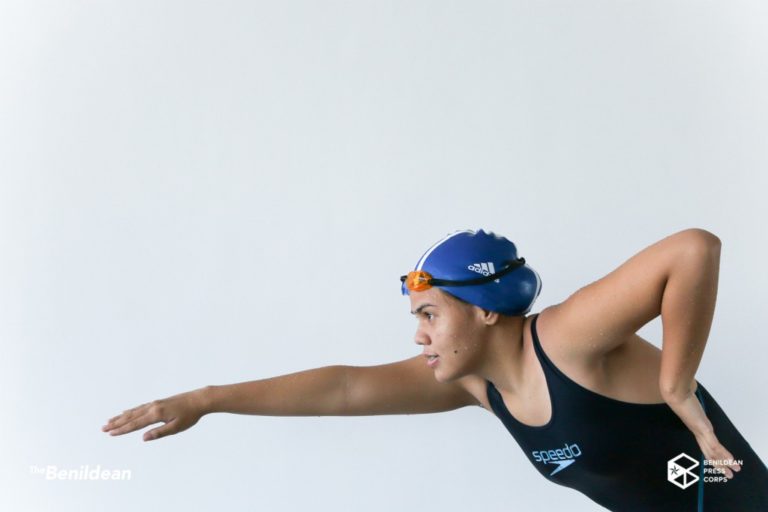"
Becoming a triathlete is not a piece of cake. However, starting up and developing your strength, endurance, and speed is possible. It may take a while but with the right amount of dedication and patience, you should be in shape. For our first article in a series of three, we will show you some workouts that can help you get a kick-start if you want to enter the world of the real Ironman.
Swimming is the first leg in triathlon and possibly the most difficult one since it’s a sport that requires holding your breath. Other sports train you to breathe properly, but swimming gives you little space to breathe. Because swimming takes a lot of energy to do, triathletes should maintain a proper pace and still reserve strength for the bike and run leg.
Preparation
Preparation and training go side-by-side. Training won’t be efficient without the proper preparation and vice versa. Now keep in mind that this preparation can be applied in all three legs of the sport. First off, always make sure to have 7-8 hours of sleep before training. As for nutrition, food will be your main source of energy. Think of yourself as car and food as fuel. The longer and faster you go, the more fuel you burn. In one meal, you have to make sure that your plate has a big portion of carbohydrates and proteins (half-cup of rice and one grilled chicken breast and a cup of vegetables) , and a small portion of fats (The skin on your chicken should be enough). You may vary your meal but stick with the portions. Most importantly, cut out junk food and the sodas.
Drink at least 2 liters of water per day. If you’re into juices or energy drinks, consume them equally with water. So if you’re drinking a cup of juice, wash it up with the same amount of water. Stick with fruits when it comes to desserts. If you’re really craving for something, take a bite out of it. Training will push your metabolism faster so snacks are okay as long as it’s healthy. Limit your snacks to one every four hours. Remember that triathletes do three sports in one go so don’t feel guilty about eating that much if you’re consistently training.
For your gear, don’t wear the usual swimming shirt and shorts tandem. Triathletes are comfortable in swimsuits or trunks. A swimwear made of lycra, polyester or nylon will do. If you’re not yet comfortable in wearing those, wear a rashguard and/or jammers. A pair of comfortable goggles, and a fitting swimming cap is a must. Make sure that your goggles are not too tight or too loose.
Warm it up
Stretch from head to toe before going down the pool. This is to get your muscles ready to go. After stretching, warm up with a 400-meter freestyle on an easy pace. Make sure that your breathing is uniform. Breath on your right pull and do bubbles on your left. To get the total lap count, just get the distance of your work out and divide it by the distance of the pool you’re swimming in. It will take some time to end but your initial goal here is to just finish the workout. It will get boring at some point and little things like singing in your head can make the biggest differences.
Kicking and pulling your way to win
It’s now time to focus on the kick and pull. Kicking and pulling has to be consistent and yet harmonious. Start off by doing 10 sets of 50-meter flutter kicks while holding unto a kickboard. Add a 15 second rest interval in between sets. Focus on kicking continually and make sure that your upper body is relaxed. For the pull, do 8 sets of 100-meter freestyle pull. Remember to use a pullbuoy to avoid kicking and at the same time to help you focus on your pulling.
I repeat, this is a drill
Drills come next. They are quite important because not only do they develop your speed, but also your freestyle form and endurance. Do 5 sets of 100-meter freestyle drills. Do brush-up pulling on the first 25-meters. Remember to drag the tip of your fingers on the surface of the water. On the second 25-meters, do slide up pulling. Here, slide your thumb up on the side of your body while pulling. Then do a fast but comfortable 50-meter freestyle. Add a 40 second rest interval in between sets.
Sprint finish and cool down
After the drills, switch on to sprints. Sprints are short workouts but are very intense. For starters, do 4 sets of 25-meter or 2 sets of 50-meter freestyle swim on a fast but comfortable phase. Rest for 30 seconds in between sets. End your swim session by doing a 200-meter freestyle on your easiest pace. This is very important because this should relax your muscles and make sure that you don’t suddenly kill your momentum.
Once you’ve finished training, it’s natural to reward yourself. After all, that’s already 2500-meters of swimming. However, accept the fact that in about 2-3 weeks, the workout will be harder. Don’t be discouraged, for it will pay off in the end. If you’re feeling unmotivated, just think of yourself in the Ironman finish line, wearing the finisher shirt and medal hanging on your neck.
"


